Vejer de la Frontera is a beautiful white village on the Costa de la Luz in Cadiz province, Andalucia, Spain
By Nick Nutter | Updated 1 Jun 2022 | Cádiz | Villages |
Login to add to YOUR Favourites or Read Later
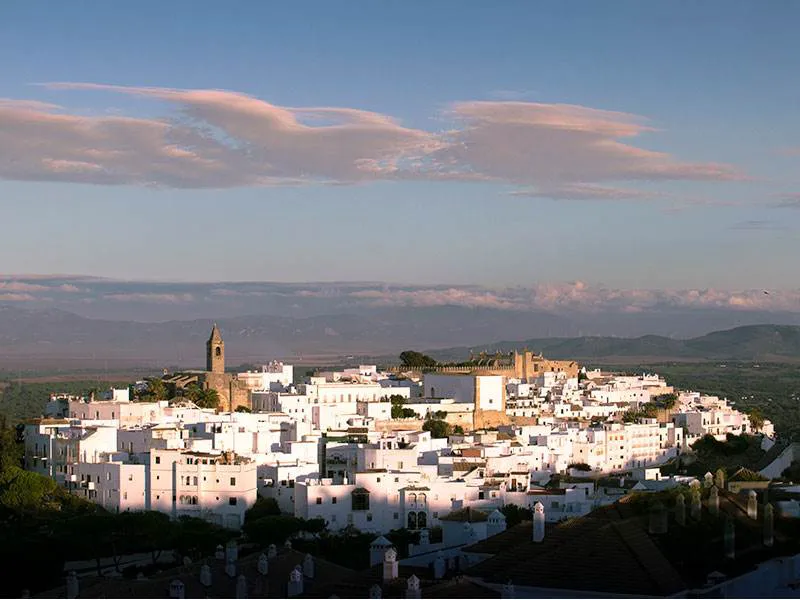
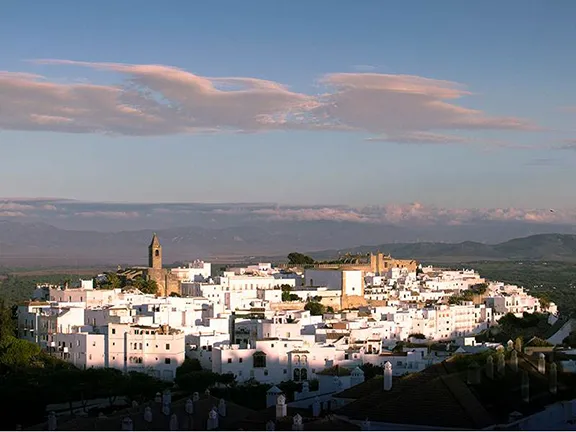
Vejer de la Frontera (Courtesy of Explore la Tierra)
Be transported back in time to Vejer de la Frontera in Cádiz province. Bypassed by the N340, it is almost as if time itself has ignored this hauntingly beautiful white village. Haunting may actually be correct. It is easy to imagine the Mediaeval inhabitants of this place passing the time of day from their elaborate balconies, or emerging from the tiny doors into narrow, winding streets to walk to the well (itself guarded by the castle wall), all safely ensconced within the solid walls of the castle and town. Perhaps the atmosphere is due to the apparent lack of 20th century amenities, including motor vehicles, within the old town. Maybe it is the bustle, there is no other word for it, of visitors investigating all the nooks and crannies. The locals appear not to notice any intrusion into their lives, in fact, some of them open their homes to visitors so that their patios, filled with colourful flowers, may be admired. Or it could be that wherever you look you are somehow reminded that Vejer de la Frontera is an old town, a very old town, dating back at least two and a half thousand years.
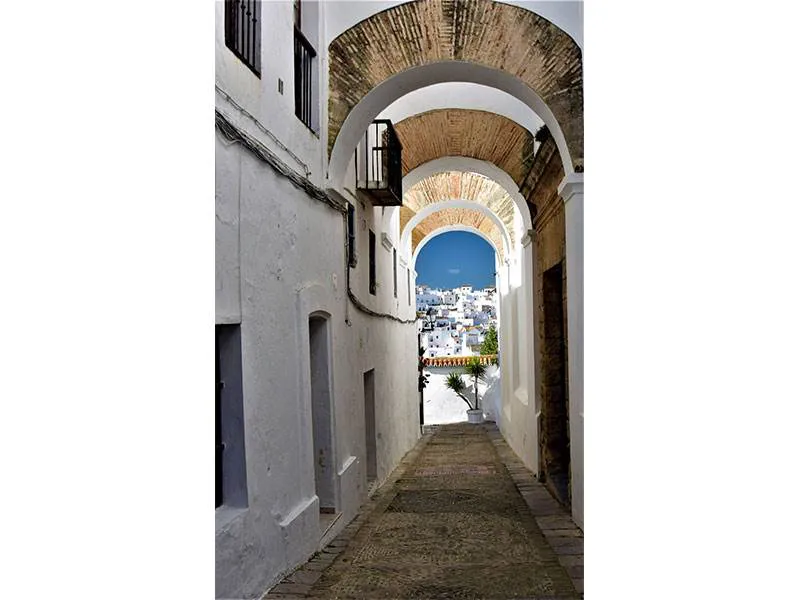
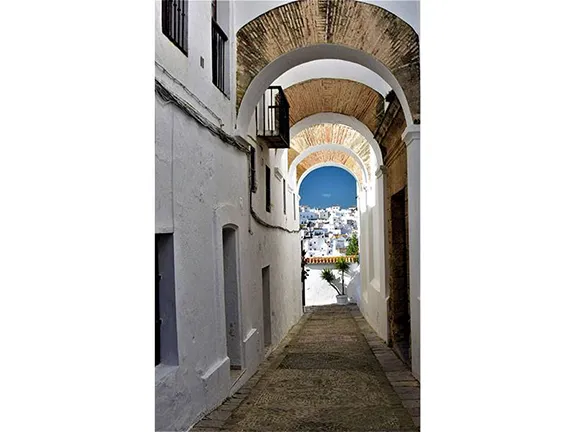
Arco de la Villa (Courtesy of Explore la Tierra)
The first inhabitants of the buttress of rock overlooking the river Barbate were local farming people who were ‘discovered’ by the Phoenician traders who appeared off the coast about 850 BC. In those days the sea level was higher than it is today, and the settlement would have looked out over a bay. Today, Vejer de la Frontera is 10 kilometres from the coast.
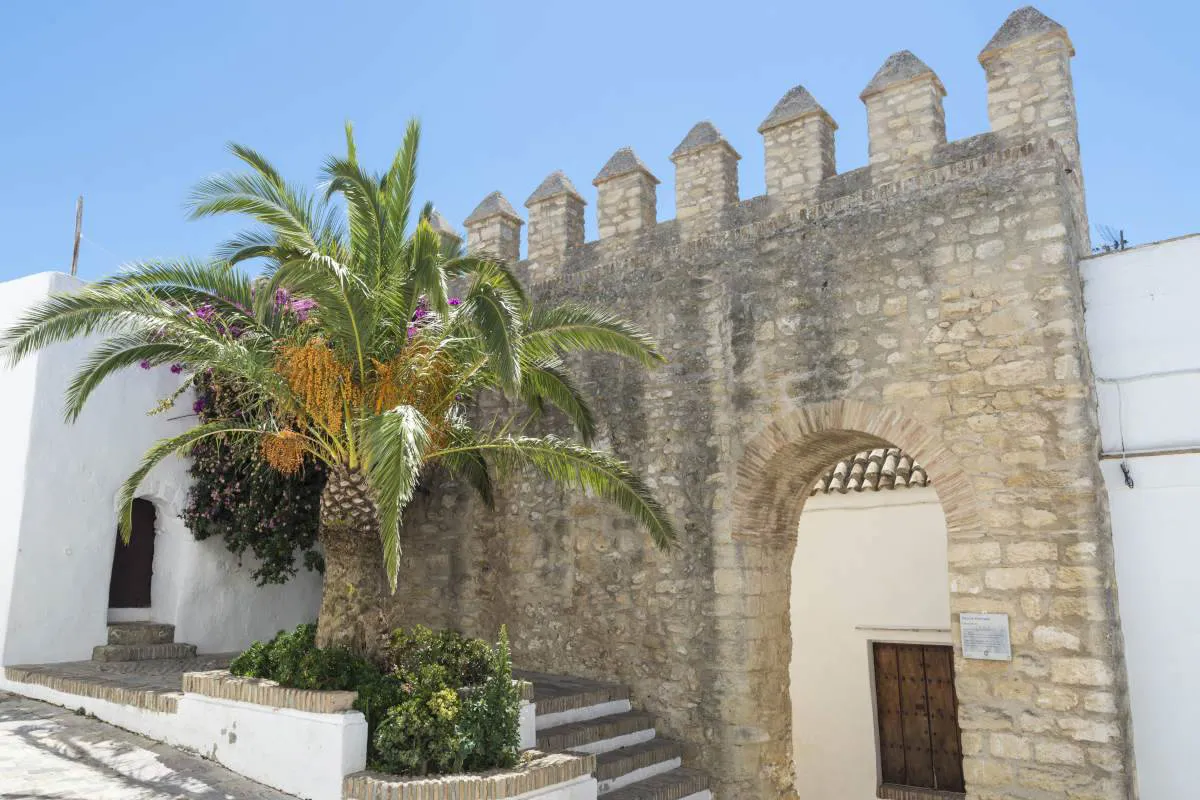
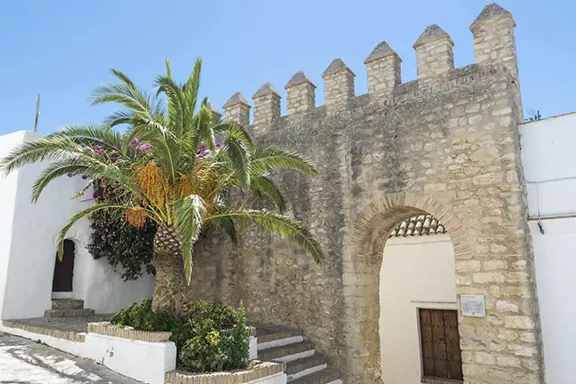
Town Walls (Courtesy of Explore la Tierra)
When the Romans arrived, they recorded the name of the settlement as Beka and placed it within the region controlled by the Turdetani people, the remnants of the Tartessian civilisation. The Romans founded their own town of Besipo. Almost nothing remains from that period, two columns in the local church and an aqueduct called Santa Lucia, about 3 kilometres outside the town, that may or may not be Roman.
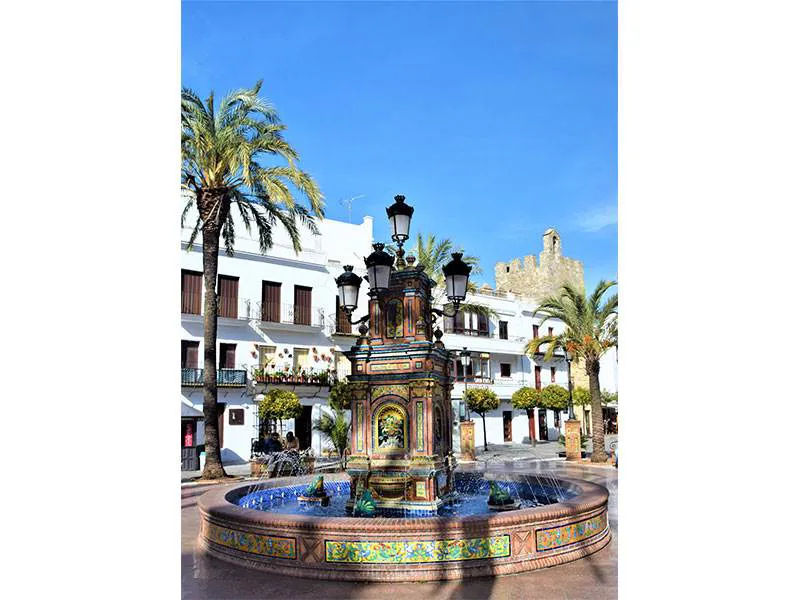
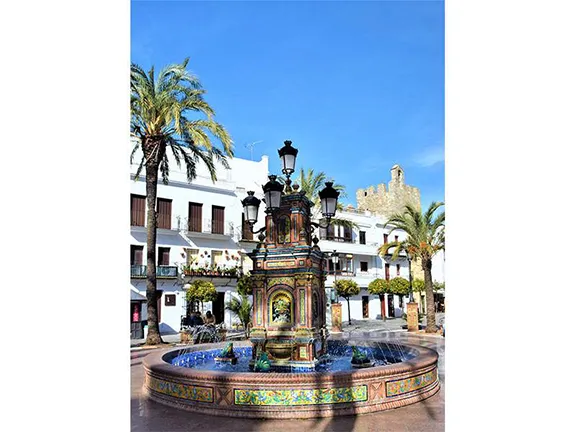
Fountain in Plaza Espana (Courtesy of Explore la Tierra)
Mentioning the view across to the coast. That area is called La Janda and was the scene of a decisive battle in 711 AD during which Tarik and his troops from North Africa, defeated the Visigoth king of Hispania, Ruderic, thereby laying the foundation for seven hundred years of Moorish occupation of Al-Andalus. Vejer, called Vejer de la Miel in those days due to the number of beehives in the area, did not have to wait quite so long for its liberation. In 1250, Ferdinand III, ‘the Holy’, captured the town for Castille. In 1264, the Arabs regained control of the town and held it until they were finally ejected in 1285. For almost two hundred years, Vejer was on the border between Christian and Moorish forces and obtained the suffix, de la Frontera.
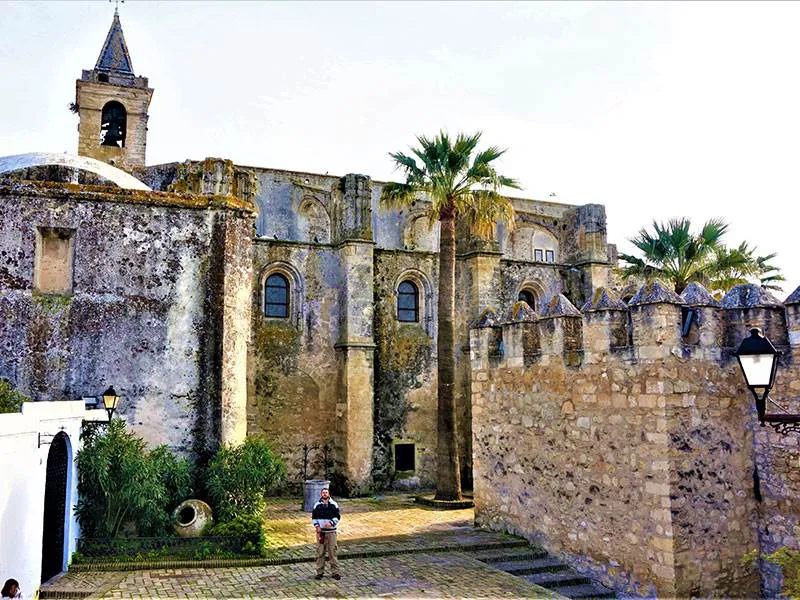
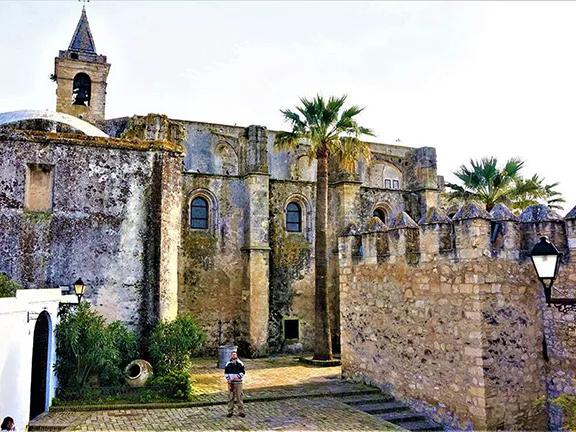
Church at Vejar de la Frontera (Courtesy of Explore la Tierra)
The inhabitants of Vejer de la Frontera today, still enjoy a right known as ‘Hazas de Suerte’, (Plots of Fortune). Following the resettlement of the town in 1307, the king handed it over to Don Alonso Perez de Guzman, the founder of the ducal house of Medina Sidonia on condition that the people be ‘exempt from the tasks of farming and cattle rearing', conceding them the privilege of using ‘all the land, water, hills and woods in the town’. The early Dukes of Medina Sidonia respected the conditions. However, in the 16th century, the Duke rescinded the privileges. He found himself brought to trial in front of the monarch, by the people of Vejer de la Frontera, who won the case and the citizens to this day have the rights of ‘Hazas de Suerte’.
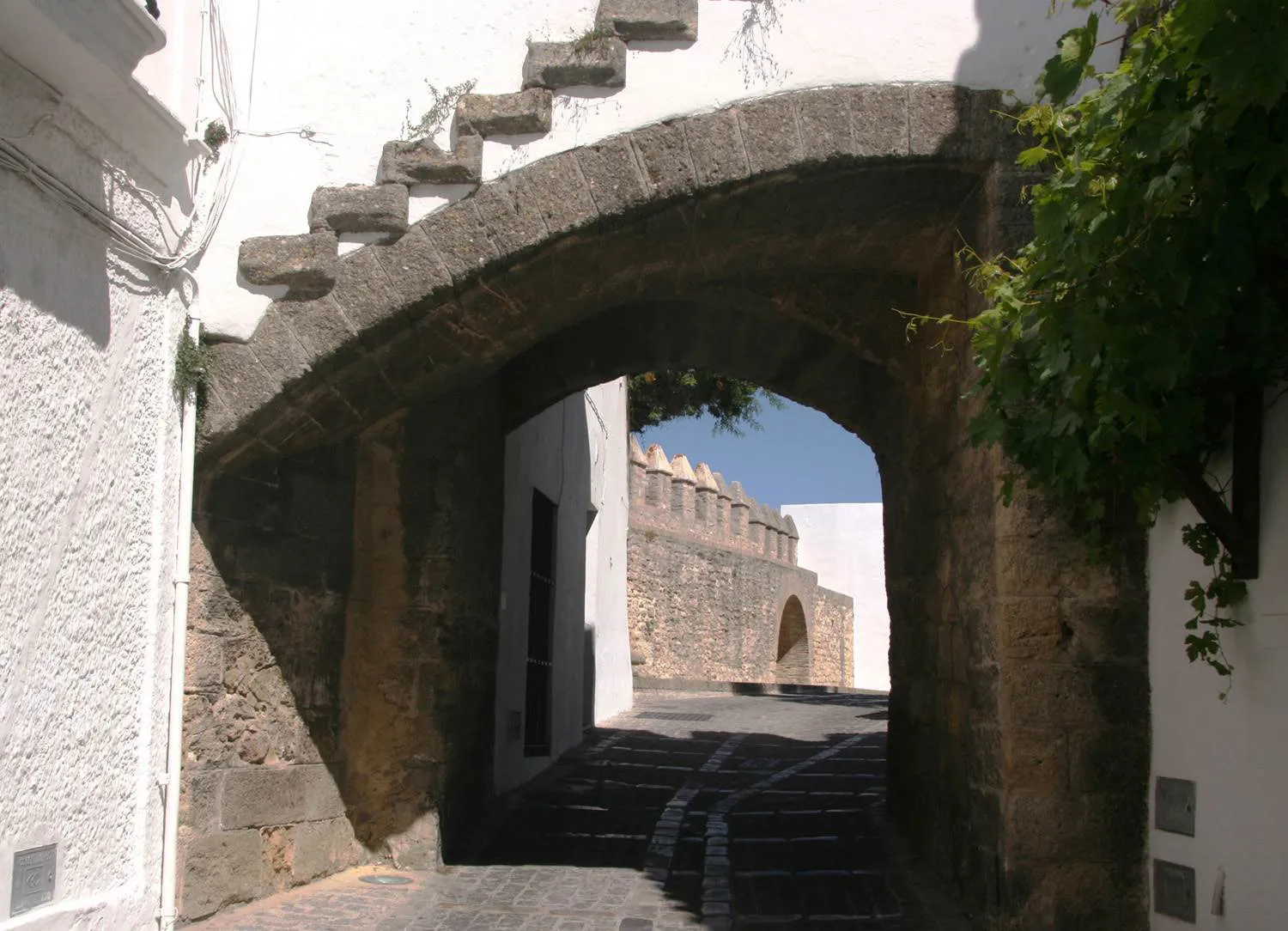
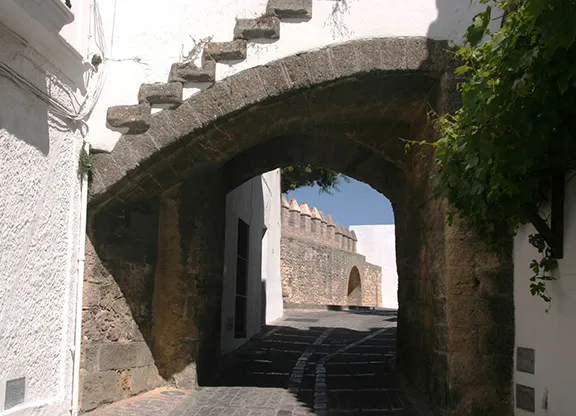
Old town (Courtesy of Explore la Tierra)
It is from the Moorish period that Vejer de la Frontera receives most of its character. The narrow, winding network of streets, the houses built into the castle wall and parts of the town walls. The castle is actually 14th century, built by Don Alonso Perez de Guzman on the site of the Arab mosque, although the castle doors are from the 11th century Moorish castle. The castle was a key part of the coastal defences against the Barbary pirates and helped the Guzman family retain their rights over the lucrative tuna fishing industry in the Gibraltar Strait. In Plaza España, just outside the town walls, you will find a fountain. It is decorated with traditional Andalucian ceramic frogs that throw water into the air, harking back to the Moorish past. From Plaza España, where you will also find the tourist office who will supply you with an invaluable map of the town, take the arched entrance, Arco de la Villa, through the walls and enter the past.
Today, Vejer de la Frontera relies on tourism for its income. You will find bars, cafes and restaurants, all offering local food and catering for the visitors. Not surprisingly, tuna is a popular fish here. During the day, explore the myriad of speciality artisan shops in the town. In the evening, follow the sound of flamenco music to find yourself at an authentic flamenco bar. Vejer de la Frontera can probably best be described as a fusion between the best of the old and the best of the new.
Although farming and agriculture have taken a back seat, there are still ample signs of its previous importance. As you drive into town you may have noticed three squat looking windmills. They are in a park called ‘Hazas de Suerte’ and are named San Francisco, San Antonio and San José. Built in the 19th century, they were three of seven mills that ground grain for the local population. The style in which they are built is called Carthaginian, for some, now forgotten, reason. The thick lower part of the walls ensured the mill remained standing in the strong winds that periodically howl in from the Atlantic. The whole of the conical roof was designed to rotate to present the eight bladed sails to the wind. Canvas was spread between two blades to make four sails. The operator could adjust the amount of canvas on the sail depending on the strength of the wind, very much like a sailing vessel. San José is open to the public. From here a circular walk of approximately 6 kilometres takes you around the outskirts of the town, via miradors offering spectacular views, along part of a Roman road, and past the other four mills. Santa Ines is the oldest and dates to the 17th century, Marquez is the newest having been built at the beginning of the 20th century, whilst Cruz de Conil and Morillo are 19th century. The latter was working well into the 1970s. Ask for the route at the tourist office.
Finally, no article about Vejer de la Frontera would be complete without a mention of its local carnival. At the time of writing (2020), a gentleman by the name of Pepi Muñoz has been organising the annual carnival for many years. Spread over 10 days at the end of February, beginning of March, the carnival at Vejer de la Frontera is modelled on the Cádiz Carnival. It culminates in a ‘Gran Cabalgata del Humor’, literally Humorous Procession, that ends in Plaza España with the Quema del Pito del Carnaval, burning of the carnival mascot.